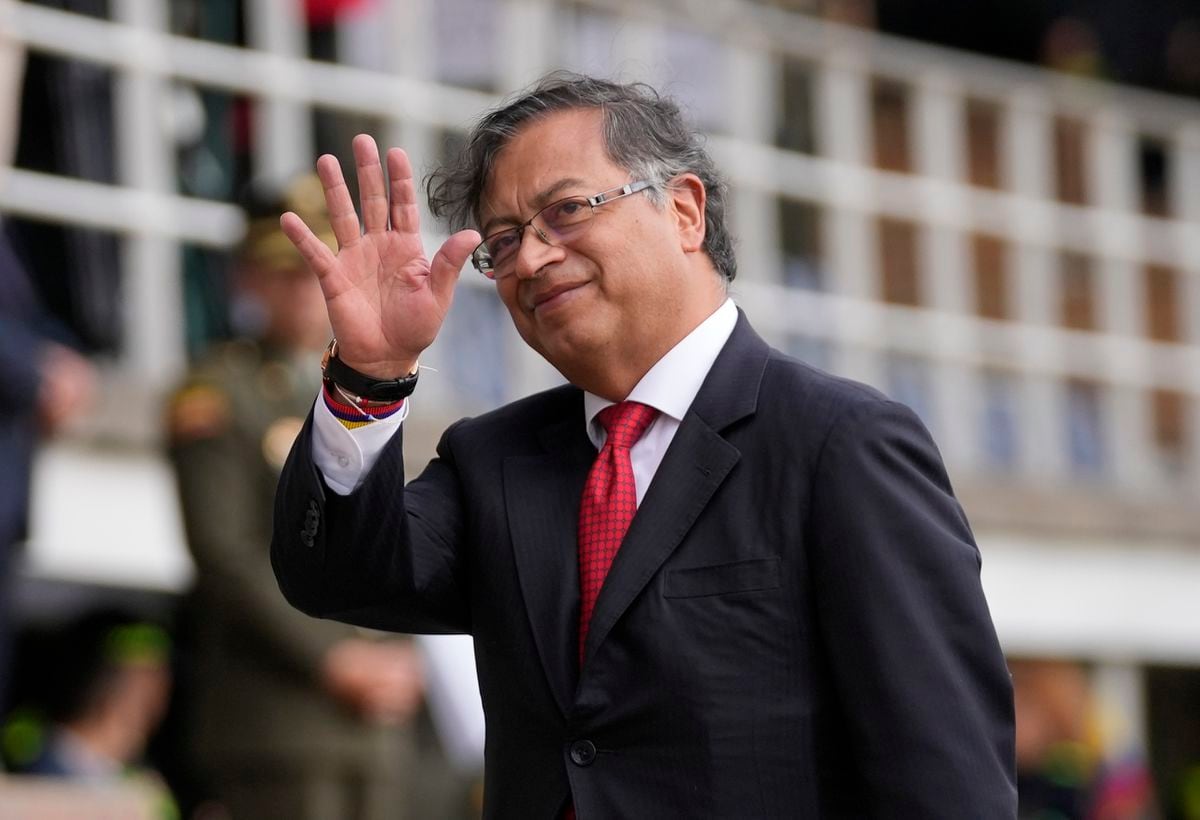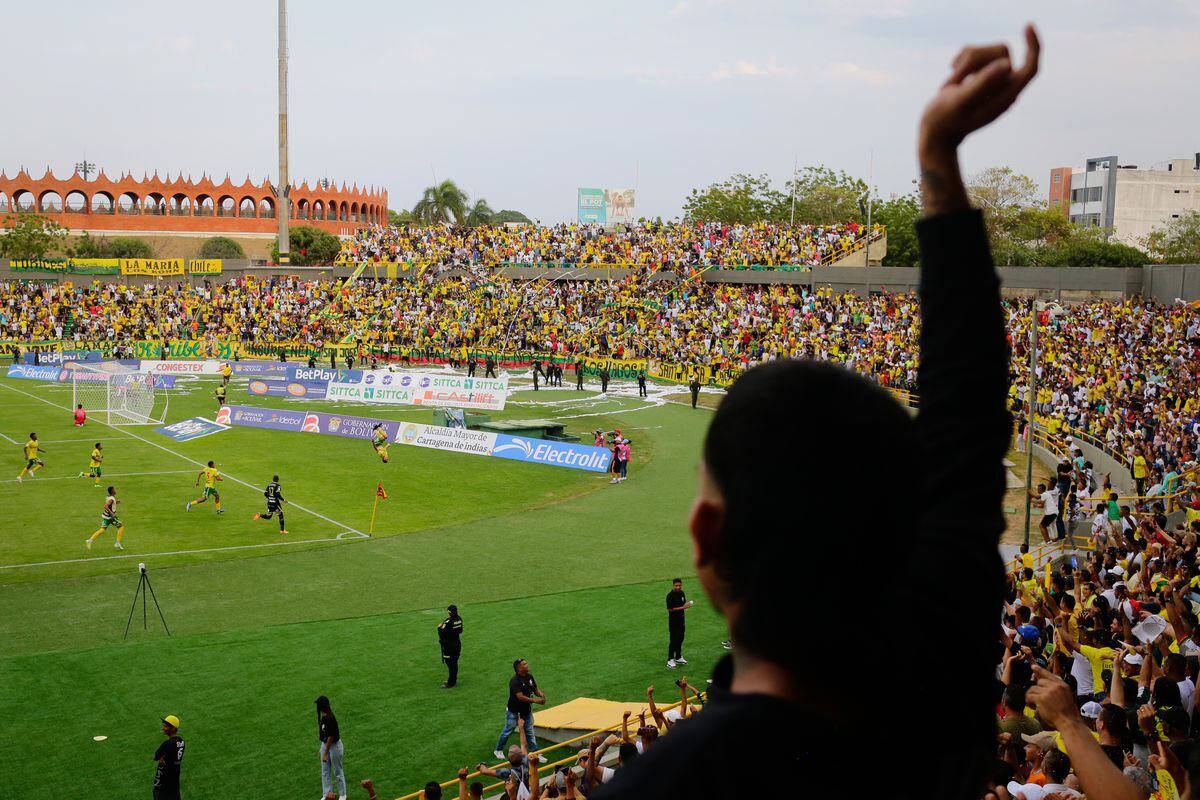A group of people protest on the night of May 11, 2021 in the Siloé neighborhood, in Cali. Ernesto Guzmán Jr. / EFE
Wearing a white shirt and jeans, with no other weapon than a cell phone, Mónica Almanza stood in front of the bus headed by the
indigenous
minga
and stopped their march.
They tried to push her aside and she wouldn't let go.
"Run me down if you want," he told them.
They attacked her and dragged her across the floor.
It happened in Cali, the third largest city in Colombia, when members of indigenous communities in Cauca, a province in the south of the country, wanted to take over a residential and commercial area. Eleven days had passed since the National Strike; of peaceful marches, but also of vandalism and the blocking of the access roads to a city of three million inhabitants. Why?
A first hypothesis is social. Official figures indicate that the pandemic impoverished the province of Valle, whose capital is Cali. Monetary poverty went from 24 to 34%. But Cali is still among the 4 out of 20 that is better; the national average is 42.5% and Bogotá is 40%. And unemployment in Cali, as of March, was 18.7%, slightly above the national but below Bogotá, which was 20.1%. Without ignoring that Cali is a city with a lot of poverty and inequality, arguing that the protests were more complex in it due to its social problems does not seem to be forceful.
A second hypothesis is the provocation of the police.
International organizations and media focused their gaze on Cali on the possible excesses of authority;
It did not take several countries to condemn the government.
Without acknowledging the existence of cases of possible abuse, a matter of investigation, the gratitude of the people of Cali with the riot police is enormous.
Images of her being applauded as a hero as she passes through the city are revealing.
Therefore, the thesis according to which the Public Force exacerbated the spirits of the protesters is not convincing.
Furthermore, Cali continues to demand police and military presence and the restoration of order.
In the video, the attack on Mónica Almanza, when she stood in front of the bus headed by the indigenous minga.PHOTO: EFE |
VIDEO: EPV
A third explanation is its location. An hour south of Cali is Cauca, whose capital is Popayán. The north of the province is home to some of the main cocaine laboratories, and two hours away is Buenaventura, the country's main port on the Pacific, the axis of the Litoral, and whose wide rivers are the entry point for weapons and chemical precursors and the exit for cocaine. . In Cauca there is a settlement of drug trafficking, dissidents from the FARC, ELN and indigenous communities, including the one that marched to Cali. The authorities point out that the events in Cali have not only been the presence of illegal armed groups, money and weapons from drug trafficking.
A fourth explanation is the lack of foresight. Cali was one of the cities most affected by vandalism and blockades in the 2019 strike. It was to be expected then that something similar would happen. But adequate measures were not taken to prevent the blocking of the access roads, protect the stations and buses of mass transport, public buildings and commerce. The intelligence of the State is questioned or, failing that, not having acted if there was information. And when the mayor, in his capacity as police chief, authorized the riot squad to take to the streets, the city was on fire. The lack of leadership and coherence has been notorious.
In other words, the reason why the National Strike has been more intense in Cali does not seem to lie in their social situation or in a provocation by the police, as some point out.
The money and weapons from drug trafficking and the guerrillas, and the authorities' lack of foresight, would better explain what happened.
But it is still insufficient;
a much broader look should be taken.
The tax reform of the Government of Iván Duque ended up being a pretext to stoke the marches, because once the Congress was withdrawn, the strike was not lifted.
On the contrary, it was extended in time and the stoppage of the transporters was added.
The foregoing leads us to think that there is a different purpose: to weaken the Government and the right with a view to the 2022 elections. The strategy is a prolonged and systemic paralysis, in which the Government is held responsible.
This does not mean that there is no discomfort or reasons to leave. The last year has been difficult. Colombia started 2020 with growth projections of 3.4%, higher than the world average. It was an optimistic country, which in recent decades had managed to reduce poverty and grow the middle class, reduce crime, triple foreign tourism, join the OECD, and sign a peace agreement with the FARC, not without controversy. .
But like other countries, the slowdown in the economy caused by the pandemic has thrown 3.5 million people into poverty. The Government implemented several programs to support the most vulnerable and to avoid massive layoffs in companies. Initiatives that paradoxically aspired to continue financing with the tax reform that overflowed the crown and that, according to serious economic research centers, was the most progressive in decades.
Social protest is a fundamental right. The question is whether it should take place with violence and violating the rights of the rest of the population, as is the case in Cali; Human rights that, in the opinion of the majority of Caleños, matter little abroad. Food, medical supplies, and fuel drop in when roadblockers allow it. People are kidnapped from their homes. If something like this happened in Vancouver, Las Vegas, Amsterdam, Geneva or Barcelona, with a similar population, surely the look would be different.
Cali has lived through difficult times and has overcome them thanks to the resilience of its citizens.
Not in vain is it a thriving and entrepreneurial city, headquarters of important multinationals, a national leader in various sectors, with top-level regional universities and hospitals, and strong social and union leadership.
But it is still under siege, waiting for the restoration of order and its rights, for a dialogue with greatness, and an objective look from the outside.
Francisco José Lloreda Mera
is former director of the newspaper El País de Cali, former Minister of State and doctor in Politics from the University of Oxford.



/cloudfront-eu-central-1.images.arcpublishing.com/prisa/SPS4LVSU4R7KTMLCUFKZHKIFWM.jpg)





